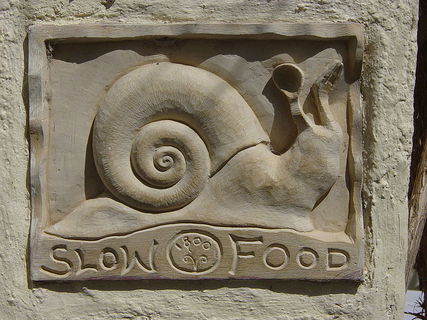The Shinshank RedemptionIt’s that time again. Even those of us most capable of denial must face the fact that winter is near. Fireplaces are in use again for both heat and comfort. There may yet be one more major round up of fallen leaves. The holidays, their anticipation and their attendant frenzy, are right around the corner. Slowly, all things are being battened down for our annual period of quiescence. A time to indulge in long slow, enriching processes that might include finally reading Moby Dick, or a marathon re-watching of Brideshead Revisited. Perhaps because it’s a time for staying closer to home, many kitchens begin to give off deep rich aromas of long, slow-cooked dishes such as soups, stews and braises thet nourish and satisfy. The phrase “tender at the bone” has long had a presence in the culture of our table. There are real scientific reasons behind the phrase. Meat cooked on the bone benefits from some unique properties. The bone’s presence during the cooking process changes both the flavor and texture of the meat. Bones contain a gelatin of albumen and collagen which creates substance and taste differences in the dish. The bone itself acts as a conductor of heat within the meat so that the meat is cooked from both the outside and the inside of the particular cut, which conveys the heat more evenly and it prevents the meat from drying out and avoids excessive shrinking. A generation or two ago, Italian-American grandmothers wouldn’t have dreamed of making chicken soup without the hens’ feet in the pot for these very reasons. Nomenclature plays its own role in how we think about certain foods. Naturally, we all need a couple of dishes we can bring to the table without having spent too much time to do it. Yet for many the very term “fast food” is an oxymoron because it has become synonomous with big business’ quarterly profit goals rather than nutrition and taste. In some cases, one could truly question whether it qualifies as food at all. A more recent term that has appeared is “hack”. These days a hack is often a kitchen shortcut. For example: using a prepared blend of spices to sprinkle on chicken or fish; then roasting the seasoned pieces in an oven. Though you should always check for the amount of salt and non natural ingredients, it’s quick, effective and tasty meal that wasn’t mass produced in a factory. Autumn seems to open some primal need for foods enhanced by a lanquid preparation. Which doesn’t necessary mean that it is a preparation that requires constant tending. One of the prime cooking methods that satisfies that desire is braising. We’ve talked here previously about braising and its riches. While it’s not a new process, the Italians were the first to bring in back to the forefront in the late 1980s with the advent of The Slow Food Movement. The elegant Italian Osso Buco is one such dish. There are stews of nearly every ethnicity. The French have given us cassoulets, fricassees, bouillabaisses and bourguignons. The North Africans contributed many tagines. The list includes Mexican chili, Brazilian feijoada, Belgium waterzooi, Russian stroganoff, Asian hot pots, Cajun gumbos, Hungarian goulashes, British jugged hare and Kentucky burgoo. The American favorite, pot roast, is a proud member of that same group. As the winds pick up a chill and, assuming there is any water left in the skies after this last summer, as the snow looms, as the solstice draws closer, it is lovely to enjoy a few of those gratifying, frequently one pot meals. There are many braised dishes to be found on the market web site including: Stinco di Maiale, Braised Spiced Lamb Shanks, Braised Chicken and Fennel and Coq au Vin. This week we’ll add another recipe, Lamb Shanks Braised with Anise, Blood Oranges and Coconut Milk. It is easier than the name might sound as the cooking method does most of the work. Give it a try.
0 Comments
Leave a Reply. |




